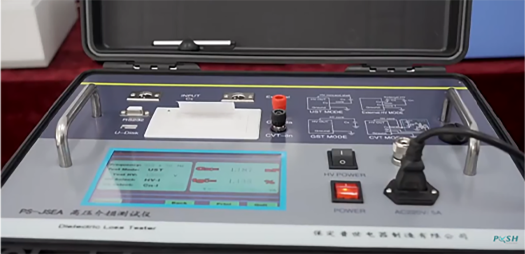 English
English



-
 Afrikaans
Afrikaans -
 Albanian
Albanian -
 Amharic
Amharic -
 Arabic
Arabic -
 Armenian
Armenian -
 Azerbaijani
Azerbaijani -
 Basque
Basque -
 Belarusian
Belarusian -
 Bengali
Bengali -
 Bosnian
Bosnian -
 Bulgarian
Bulgarian -
 Catalan
Catalan -
 Cebuano
Cebuano -
 China
China -
 China (Taiwan)
China (Taiwan) -
 Corsican
Corsican -
 Croatian
Croatian -
 Czech
Czech -
 Danish
Danish -
 Dutch
Dutch -
 English
English -
 Esperanto
Esperanto -
 Estonian
Estonian -
 Finnish
Finnish -
 French
French -
 Frisian
Frisian -
 Galician
Galician -
 Georgian
Georgian -
 German
German -
 Greek
Greek -
 Gujarati
Gujarati -
 Haitian Creole
Haitian Creole -
 hausa
hausa -
 hawaiian
hawaiian -
 Hebrew
Hebrew -
 Hindi
Hindi -
 Miao
Miao -
 Hungarian
Hungarian -
 Icelandic
Icelandic -
 igbo
igbo -
 Indonesian
Indonesian -
 irish
irish -
 Italian
Italian -
 Japanese
Japanese -
 Javanese
Javanese -
 Kannada
Kannada -
 kazakh
kazakh -
 Khmer
Khmer -
 Rwandese
Rwandese -
 Korean
Korean -
 Kurdish
Kurdish -
 Kyrgyz
Kyrgyz -
 Lao
Lao -
 Latin
Latin -
 Latvian
Latvian -
 Lithuanian
Lithuanian -
 Luxembourgish
Luxembourgish -
 Macedonian
Macedonian -
 Malgashi
Malgashi -
 Malay
Malay -
 Malayalam
Malayalam -
 Maltese
Maltese -
 Maori
Maori -
 Marathi
Marathi -
 Mongolian
Mongolian -
 Myanmar
Myanmar -
 Nepali
Nepali -
 Norwegian
Norwegian -
 Norwegian
Norwegian -
 Occitan
Occitan -
 Pashto
Pashto -
 Persian
Persian -
 Polish
Polish -
 Portuguese
Portuguese -
 Punjabi
Punjabi -
 Romanian
Romanian -
 Russian
Russian -
 Samoan
Samoan -
 Scottish Gaelic
Scottish Gaelic -
 Serbian
Serbian -
 Sesotho
Sesotho -
 Shona
Shona -
 Sindhi
Sindhi -
 Sinhala
Sinhala -
 Slovak
Slovak -
 Slovenian
Slovenian -
 Somali
Somali -
 Spanish
Spanish -
 Sundanese
Sundanese -
 Swahili
Swahili -
 Swedish
Swedish -
 Tagalog
Tagalog -
 Tajik
Tajik -
 Tamil
Tamil -
 Tatar
Tatar -
 Telugu
Telugu -
 Thai
Thai -
 Turkish
Turkish -
 Turkmen
Turkmen -
 Ukrainian
Ukrainian -
 Urdu
Urdu -
 Uighur
Uighur -
 Uzbek
Uzbek -
 Vietnamese
Vietnamese -
 Welsh
Welsh -
 Bantu
Bantu -
 Yiddish
Yiddish -
 Yoruba
Yoruba -
 Zulu
Zulu
250v insulation resistance test
Understanding 250V Insulation Resistance Testing
Insulation resistance testing is a crucial aspect of electrical maintenance and safety. At its core, this process involves evaluating the integrity of electrical insulation in cables, motors, transformers, and other electrical apparatus. Among the various voltage levels used in insulation testing, a 250V insulation resistance test is particularly common, especially in low-voltage electrical systems. This article aims to delve into the significance, methodology, and interpretation of the results from a 250V insulation resistance test.
Why Perform Insulation Resistance Testing?
Electrical insulation serves the vital function of preventing electrical leakage and ensuring safe operation. Over time, insulation can degrade due to environmental factors like moisture, temperature changes, and physical wear. This degradation can lead to reduced performance, risk of electrical shock, and potential fire hazards. Therefore, regular insulation resistance testing is essential for ensuring the reliability and safety of electrical installations.
Equipment Used for Testing
A typical insulation resistance test is conducted using an insulation resistance tester, also known as a megohmmeter. This device applies a specified voltage (in this case, 250V) to the insulation material and measures the resistance of the insulation. The testing equipment usually features an assortment of settings, allowing the user to select a suitable voltage level for the specific application.
The Testing Process
1. Preparation Before conducting an insulation resistance test, it is crucial to ensure that the circuits are de-energized and properly isolated. Disconnect the equipment from the power supply to prevent any accidental shock or damage to the tester.
3. Performing the Test Set the tester to the 250V range and initiate the test. The tester will apply the voltage across the insulation and measure the resistance, usually displaying results in megohms (MΩ).
250v insulation resistance test

4. Duration of the Test The duration of testing can vary based on the standards used, but a typical test might last anywhere from 30 seconds to several minutes. This allows the tester to take an accurate reading as the insulation’s dielectric properties stabilize.
Interpreting the Results
The outcome of a 250V insulation resistance test is straightforward a higher resistance value indicates good insulation integrity, while a lower resistance value suggests potential failure points or moisture ingress. General guidelines for interpreting the results include
- Resistance greater than 1 MΩ Indicates healthy insulation, suggesting that the insulation is in good condition. - Resistance between 0.1 MΩ and 1 MΩ Suggests that the insulation may be deteriorating, and further investigation or remedial action should be considered. - Resistance less than 0.1 MΩ Indicates poor insulation, requiring immediate attention as it may pose serious safety and operational risks.
Factors Influencing Test Results
Several factors can influence the results of an insulation resistance test
- Environmental Conditions High humidity or temperature can affect resistance measurements. Ideally, tests should be conducted under consistent conditions. - Age of Equipment Older equipment is more prone to insulation degradation, necessitating more frequent testing. - Presence of Contaminants Dirt, dust, or chemical residues on insulation surfaces can lead to misleading low readings.
Conclusion
Regularly conducting a 250V insulation resistance test is a proactive approach to electrical maintenance, ensuring the safety and reliability of electrical installations. By understanding how to perform these tests and interpret the results, electrical professionals can prevent potential failures, minimize downtime, and enhance overall safety. As a best practice, insulation resistance testing should be part of a routine maintenance program, helping safeguard both personnel and equipment in today’s increasingly electrified environment.
-
Transformer Test Essentials: Insulating Oil Tester and TypesNewsMay.30,2025
-
Grease Testers and Oil Determination OverviewNewsMay.30,2025
-
Exploring Electricity Usage Testers and GeneratorsNewsMay.30,2025
-
Essential Guide to Transformer Oil Testing ToolsNewsMay.30,2025
-
Ensuring Safety with a Circuit Breaker FinderNewsMay.30,2025
-
Electrical Safety Tools Hipot, Dielectric, VLF TestersNewsMay.30,2025



